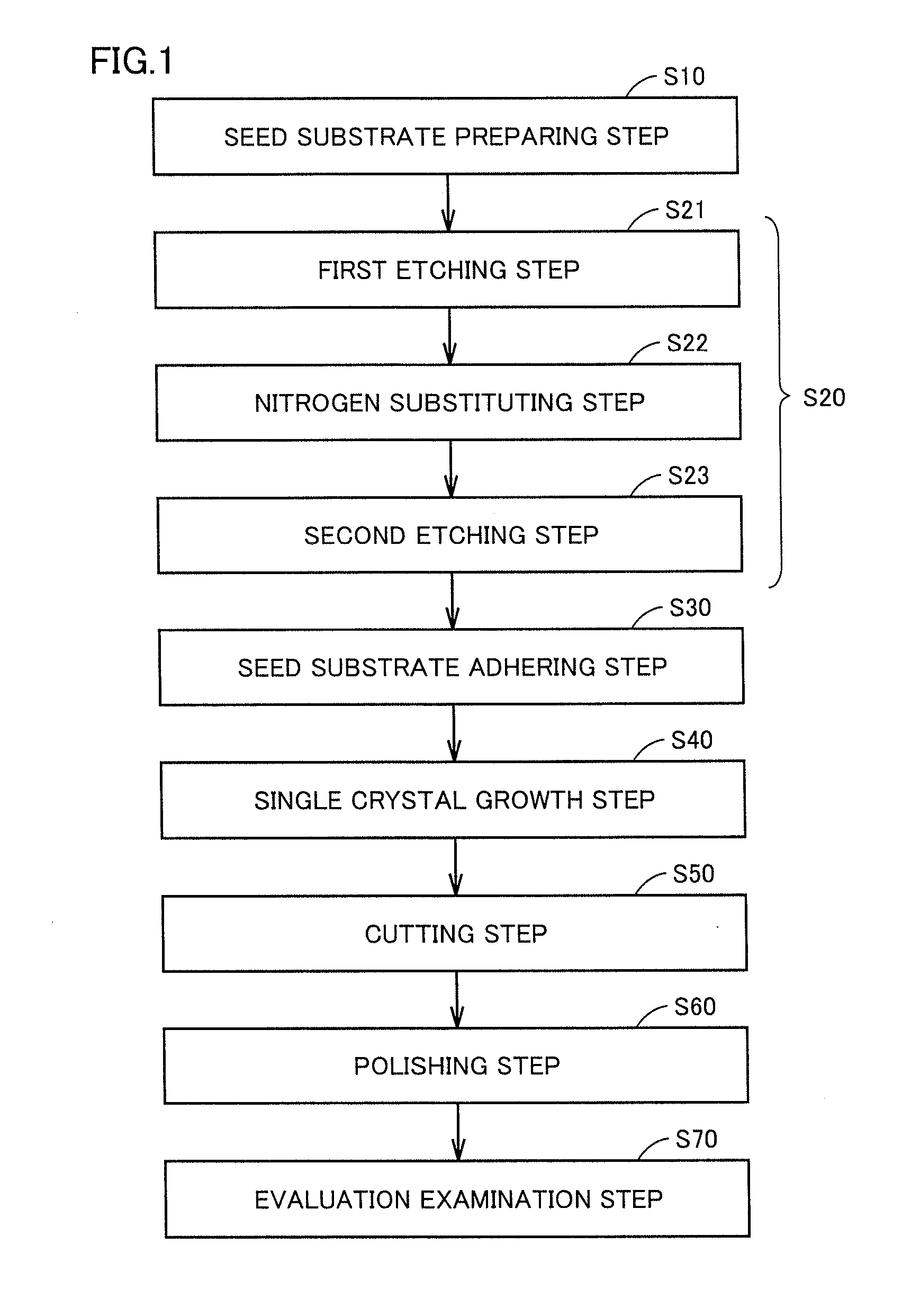Method for manufacturing silicon carbide substrate
- Summary
- Abstract
- Description
- Claims
- Application Information
AI Technical Summary
Benefits of technology
Problems solved by technology
Method used
Image
Examples
example
[0049]An experiment was conducted to confirm the effect of the present invention with regard to quality of the silicon carbide substrate. First, a seed substrate having a diameter of 2 inches and made of silicon carbide was prepared. Next, the seed substrate thus prepared was placed in an etching chamber of a reaction tube such that its main surface to be etched faced upward. The etching chamber had a volume of 14 L. Next, the etching chamber was vacuumed to reduce pressure to 50 Pa. Next, while maintaining the vacuum state in the etching chamber, temperature therein was increased to 1000° C. Next, chlorine gas was introduced into the etching chamber. The chlorine gas was introduced at a flow rate of 0.3 L / min for 30 minutes. Next, the etching chamber was vacuumed and the gas in the etching chamber was substituted with nitrogen gas. Next, oxygen gas was introduced into the etching chamber. The oxygen gas was introduced at a flow rate of 2 L / min for 5 minutes. Then, a change in the t...
PUM
 Login to View More
Login to View More Abstract
Description
Claims
Application Information
 Login to View More
Login to View More - R&D
- Intellectual Property
- Life Sciences
- Materials
- Tech Scout
- Unparalleled Data Quality
- Higher Quality Content
- 60% Fewer Hallucinations
Browse by: Latest US Patents, China's latest patents, Technical Efficacy Thesaurus, Application Domain, Technology Topic, Popular Technical Reports.
© 2025 PatSnap. All rights reserved.Legal|Privacy policy|Modern Slavery Act Transparency Statement|Sitemap|About US| Contact US: help@patsnap.com



